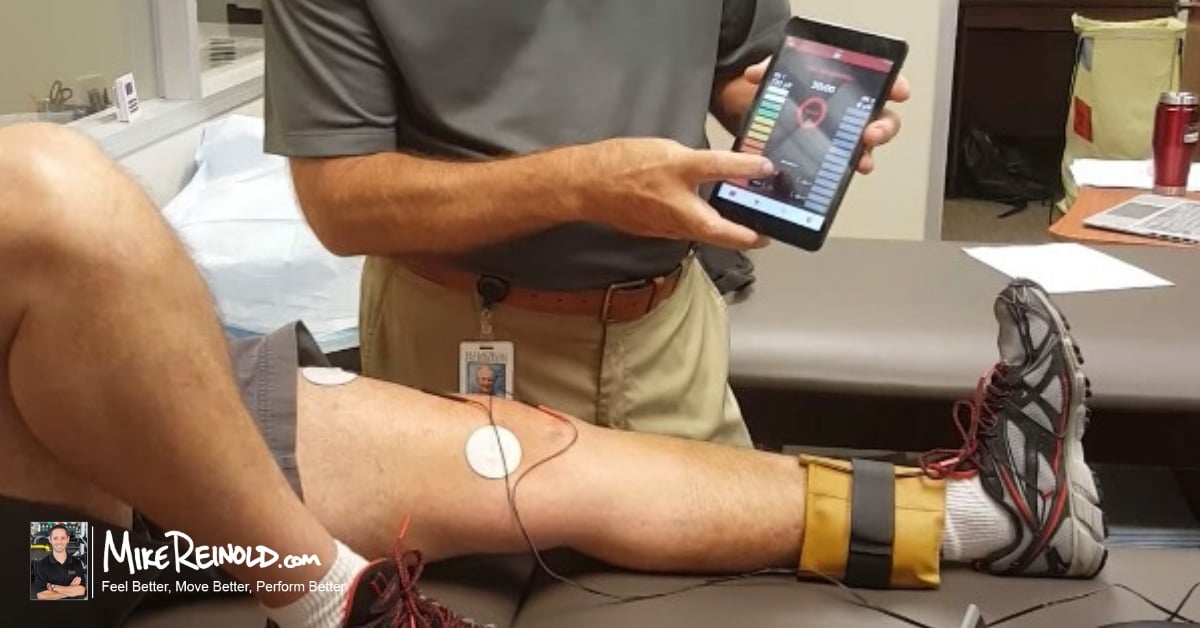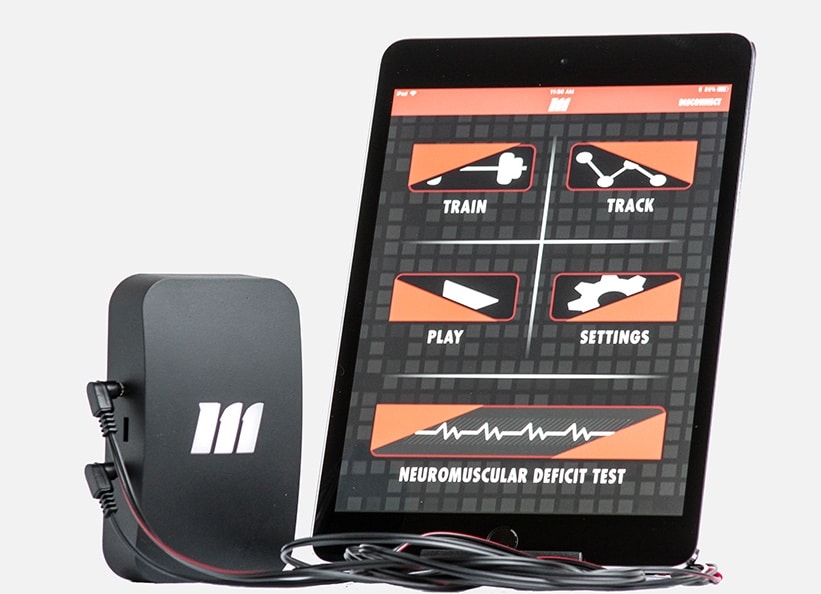To properly function after an injury or surgery, returning strength back to the involved muscle groups is always essential. In fact, strength is often used as one of our main objective findings we look at when evaluating an injury, or assessing someone’s ability to return to sport.
One thing that any sports physical therapist definitely knows about injuries is that muscle function is almost always inhibited afterward. This is especially true after a surgery.
But why?
Why does quadriceps strength go down after ACL surgery? And why does it often take so long to come back?
I recently got together with my friend Russ Paine from Houston, TX to record a presentation for my Inner Circle on the use of biofeedback in rehabilitation. Russ is one of the best sports physical therapists around and has rehabbed countless NFL, NBA, and MLB stars that you would definitely know. So he has seen a ton of ACLs in high-level athletes in his career.
The loss of strength after an injury was something we talked about, here’s a clip of Russ explaining what happens:
I thought this was really important to understand, and Russ alludes to this at the end. But, when faced with this loss of strength acutely after an injury or surgery, we often perform neuromuscular electrical stimulation to help regain muscle function.
But is there a better way?
Russ and I think so, and often use biofeedback with our athletes. The difference between NMES and biofeedback comes down to volitional control of the muscle.
Russ explains more in this clip from his presentation:
As you can see, biofeedback does a better job at stimulating volitional muscle control. Honestly, this may be the key to early phases of our rehabilitation process.
Rather than using NMES to stimulate the muscle, we can use biofeedback to actively work on improving volitional control.
Get Started with Biofeedback
Until recently, using biofeedback was a little bit harder to do. The devices were old, clunky, and expensive. But Russ and his crew have developed the
If you want to keep learning more about biofeedback. Check out Russ’s last article on my site on Why You Should Be Using Biofeedback in Rehabilitation or better yet, watch his full Current Concepts on the Use of Biofeedback in Rehabilitation presentation in my Inner Circle.






